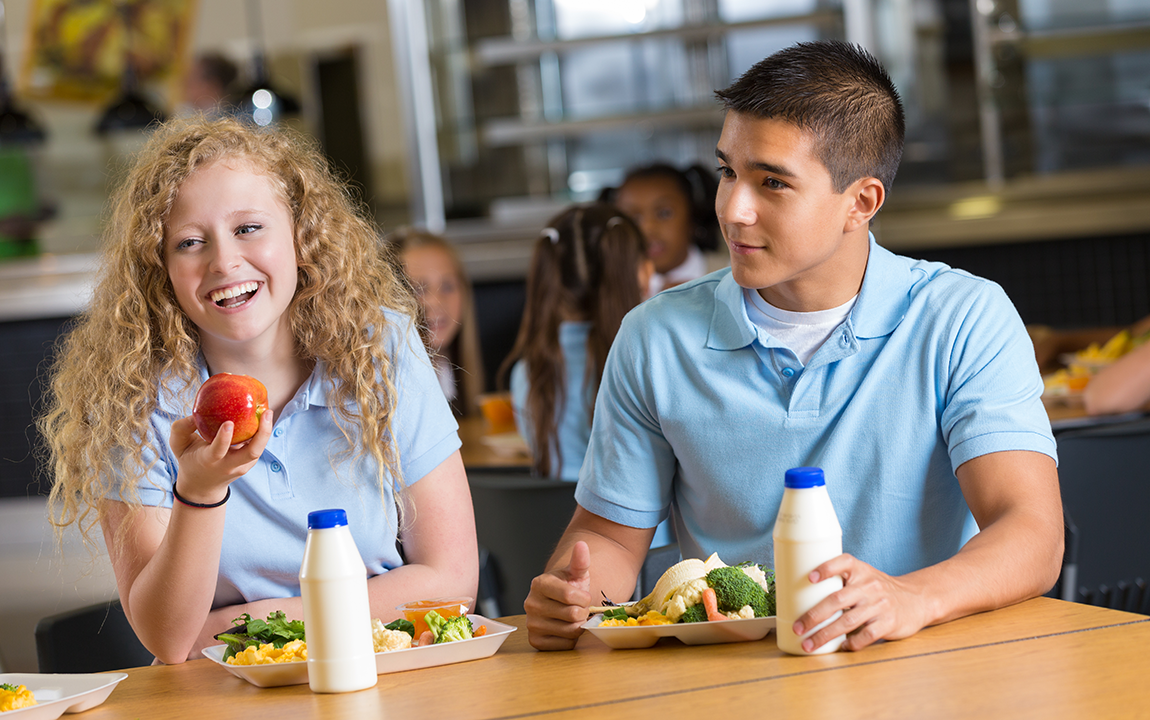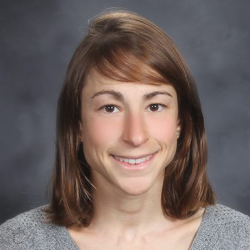
I never truly understood the importance of an authentic audience until my statistics students started collaborating on a project with our dining staff.
The idea for this project came when I heard an administrator’s concern that the school kitchen had spent more money on food this year than ever before. Because we are a boarding school where local community students can choose between eating at home or eating in the dining hall, predicting meal attendance is rather difficult. We surmised that the financial discrepancy came from a miscalculation of how much food we should buy.
I immediately jumped to the thought that data could solve this problem ... even better, my statistics students could solve this problem! A driving question emerged: “Can we use data to predict how much food will be consumed during a given meal in order to save money and limit food waste?”
The content standard we were set to explore next was: “Understand statistics as a process for making inferences about population parameters based on a random sample from that population.” Perfect for this project!
Our Entry Event with Chef Joe
I set up a meeting to talk with the head chef at school, Chef Joe. He provided basic information and data that the kitchen staff collects regarding meal attendance and menu items. In addition to the data, he lovingly told stories about the kitchen and the students he served. His passion shined through his words. I realized that he needed to be the one to tell my students about the project.
Armed with clipboards pens and questions, I brought my students in for a consultation with Chef Joe. Throughout the conversation my students were focused and inquisitive.
When we debriefed, I asked them about why the issue of predicting how much food to provide was important to Chef Joe. They were sympathetic to his concerns. He has to operate under a budget. Administration is trying to get him to cut down on spending but he still wants to offer students a variety of options and fresh produce. If he could better predict and reduce the amount of food wasted he could stay under budget.
A particularly resonant quote from Chef Joe was,
“Every day I look in the trash to see what food has been thrown away. It tells a story.”
We hoped to enlighten that story with science and mathematics.
As we brainstormed, we kept Chef’s Joe’s primary concerns in mind: predicting how much food to produce, staying under budget, maintaining variety, and managing food waste. In the end, we landed on some exciting questions.
- What types of meals are most popular?
- Do servers differentiate the amount served to a student based on body type?
- On average, how much waste does each student produce during a meal?
- Are there patterns between menu item and food waste?
I was grateful to have Chef Joe explain the problem to us. If I had explained it myself I would have focused on the spreadsheets that we had access to. In fact, I had already planned the project around those. I adjusted my plans so we could answer the student-driven questions and better serve Chef Joe.
Students Gather and Present Data
The students spent weeks tearing the data apart, putting it back together, collecting more data, running statistical tests, creating visuals, and sending out surveys. They were driven every single day and often talked about how their results could affect Chef Joe and the student body.
As our results came together we prepared a presentation for Chef Joe. The students thought deeply about the best ways to explain their findings. I often asked things like, “How are you going to explain what a P-Value means to Chef Joe?” It pushed them to search for the intuition behind the statistical techniques they learned. I don’t think my AP stats students ever developed such an understanding!
Chef Joe was impressed by the amount of data that the students gathered. They explained the math articulately and he was able to understand it well.
One group realized that the statistical test they had performed would not have much meaning for Chef Joe. Instead they decided to present a confidence interval that they calculated: a prediction for the range of weights that the average student might waste per meal. The result was much more impactful and Chef Joe was surprised by how much waste their model predicted.
The second group had tested to see whether or not servers gave different amounts of food to students based on body type. Upon hearing the premise Chef Joe interrupted, “I tell them all the time that they should do that! They should give someone like you (points to our tiny-statured dancer) a lot less than a big basketball player.” I winked at the dancer because she had done a case study on that exact scenario and SHE got served more than the athlete. They detected no statistically significant difference in serving based on body type. Chef Joe was floored.
The next group had looked for correlations between the amount of waste produced and the meal type. They ran an ANOVA test on average trash volumes to see if certain meals produce more trash than others. Even after normalizing the data for meal attendance, they found a significant difference in the amount of trash at lunchtime. This didn’t surprise Chef Joe, he had noticed this anecdotally.
Finally, the student that worked on meal satisfaction presented. He had created a touch-screen kiosk that allowed his peers to rank every meal and he wrote a code to aggregate that data. He impressed Chef Joe with the detail he extracted. In particular, Chef Joe thought that Sloppy Joe’s was really popular but the satisfaction data proved otherwise! He was also able to show a statistically significant preference for breakfast (which did not surprise Chef Joe).
Working with Chef Joe was the crucial to the project. My students were engaged and focused because they could attach a real person to the outcomes of their work. Planning for Chef Joe taught them how to be thoughtful in how they present their results and it gave their work meaning. They knew that their analysis would be important to Chef Joe, the administrators and the student body at large. This was truly powerful.
Want to learn more about PBL? Check out our books.
Register now for PBL World 2025.

